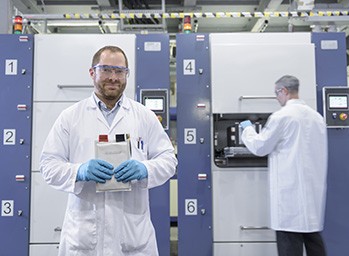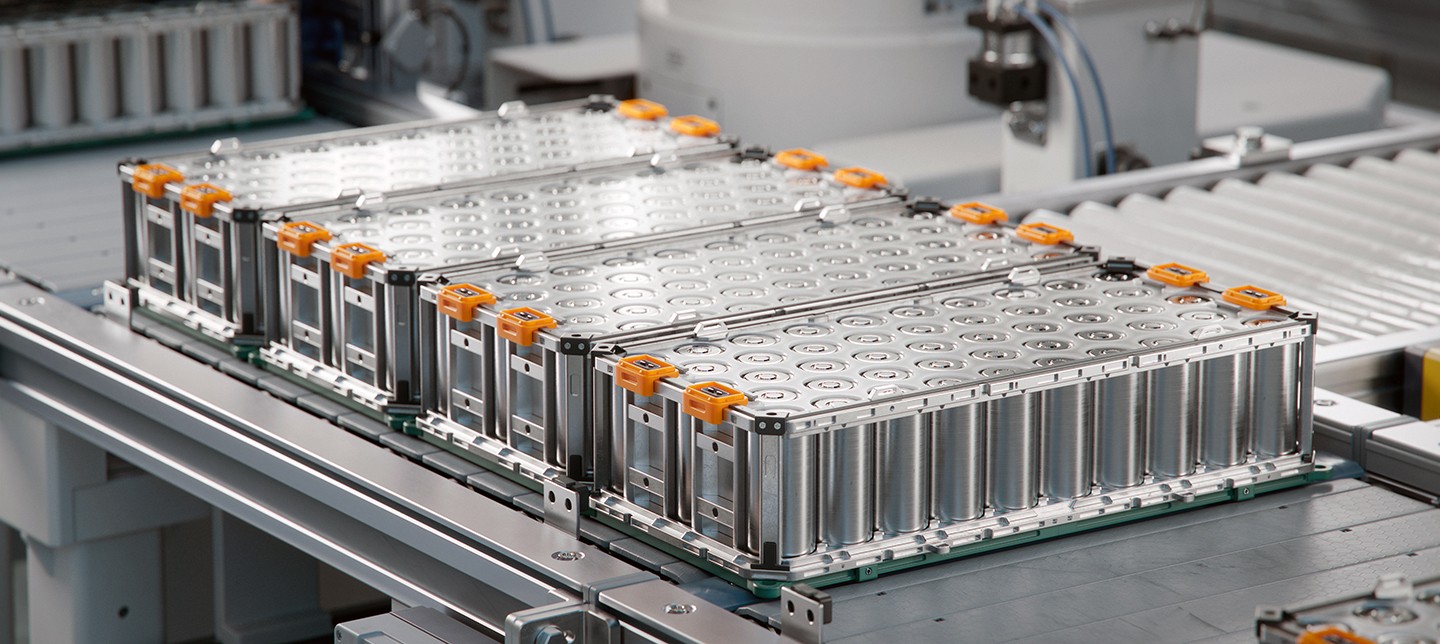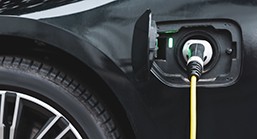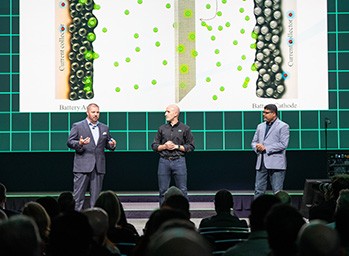What Types of Batteries are Used in Electric
Cars?
Most modern EVs use thousands of Lithium-Ion batteries working together to power the engine and other components. Typically, what consumers often refer to as the "battery" in a car is known as a battery pack in the automotive industry. Each pack comprises of modules, which in turn consist of individual cells. Some automakers are adopting a Cell to Pack strategy, where they eliminate the module stage altogether, integrating cells directly into the pack. The entire battery pack assembly is the heart of an electric vehicle.
How Do Lithium-Ion Batteries Work?
The basic components of a Lithium-Ion battery are the cathode, anode, electrolyte, separator, and current collector. Energetic lithium ions travel from the anode to the cathode through the electrolyte and separator, shedding free electrons along the way. This results in a charge that’s delivered to a current collector and used to power the vehicle.
Benefits of Lithium-Ion Batteries
There are several reasons that Lithium-Ion cells (Li-ion for short) are the preferred batteries for electric cars:
- They can store a lot of energy. Lithium atoms are very reactive and that makes them good options for powering a vehicle.
- They’re rechargeable. EVs are only practical if you can plug them in at night and have a fully charged battery waiting for you in the morning. Lithium-Ion batteries provide this and can even recharge relatively quickly for people on the road.
- Li-ion batteries are lighter than alternatives. Though by no means dainty (the combined weight of the cells is often over 1,000 pounds), these batteries hold a lot energy for their weight.
Disadvantages of Lithium-Ion Batteries
Lithium-Ion Batteries include the following limitations and challenges:
- They’re expensive. The cost of the battery makes up a considerable percentage of the vehicle’s price. This is due to the difficulty of extracting lithium, nickel, cobalt, and manganese—all necessary elements of the battery. A cheaper alternative would likely make EVs more affordable.
- They have a limited life span. According to J.D. Power, EV batteries should last 10-20 years. However, when it does die the owner is left with an expensive proposition: spend thousands of dollars to replace the battery or try to sell a car that doesn’t run. This limitation can also affect the resale value on electric vehicles that are still running as charging capacity degrades over time.
- Fires are rare but possible. You’ve probably seen footage of electric cars on fire after their battery overheats. While not common, a safer battery less prone to thermal runaway is a common-sense goal for EV designers.
Range Anxiety & Today’s EVs
One of the major factors working against the adoption of electric vehicles has been the number of miles they can travel between charges. The idea of running out of juice far from a charging station created “range anxiety.” Auto manufacturers have focused on this and many of today’s EVs can go hundreds of miles on a single charge, comparable to a gas-powered vehicle.
As of early 2023, the electric vehicle with the greatest range is the Lucid Air at 516 miles, according to Cars.com. However, with a price tag of around $155,000 few people can afford to access this advanced performance.
New EV Battery Technology on the Horizon
An EV battery breakthrough that improves the performance and/or lowers the cost of electric cars could convince many consumers to make the switch to greener vehicles. There’s also a desire by customers and manufacturers to reduce the environmental impact of mining the elements currently used in Li-ion cells. Here are some of the most promising candidates to replace Lithium-Ion batteries in cars:
- Lithium-Sulfur Batteries—According to Argonne National Laboratory, a battery design that uses a sulfur-containing positive cathode, lithium negative anode, and electrolyte medium has potential due to the natural abundance of sulfur and its ability to store more energy than traditional Li-ion cells. A successful LI-S battery would be cheaper and offer a greater range than what most EV drivers are using today. Unfortunately, the common electrolyte solution quickly corrodes the sulfur electrode, making it commercially unviable for now.
- Solid-State Batteries—A Solid-State Battery is similar in construction to a Lithium-Ion battery. However, it uses a solid electrolyte rather than a liquid or gel medium. This may seem like a minor difference, but it can bring major advantages. PopSci.com notes that Solid-State Batteries are smaller, lighter, have a higher energy density, offer faster recharging, and are less likely to overheat than their Li-ion counterparts. Why aren’t Solid-State Batteries being used in today’s EVs? There is currently no Solid-State Battery on the market available for commercial automotive use. Solid-State Batteries, despite their potential advantages, face a variety of challenges. Firstly, manufacturing Solid-State Batteries on a large scale is a complex process that demands precise control over materials and conditions, making it difficult to produce these batteries efficiently. Additionally, the cost factor plays a significant role; Solid-State Batteries are currently much more expensive than traditional Lithium-Ion batteries, which adds to the already high cost of EVs. In terms of maturity, Solid-State Battery technology is still in the early stages of development. While they promise a longer range, shorter recharge times, and improved safety, no manufacturer has yet successfully delivered on these aspects without considerable compromises. Lastly, integration issues arise when trying to fit Solid-State Batteries into existing EV designs. These batteries often necessitate design alterations or the addition of new components to the vehicle. Even so, Solid-State Batteries have the potential to revolutionize EV car battery technology if engineers can overcome these limitations.
- Sodium-Ion Batteries—An Na-ion cell sends sodium atoms from a sodium-iron cathode to a carbon anode, passing through an electrolyte and separator along the way. The advantage here is the elimination of costly lithium in favor of sodium, a much cheaper and more practical element for mass production. The main obstacle to adoption at this point is limited energy capacity as compared to Li-ion batteries. Overcoming this barrier could make Na-ion cells a true competitor to their lithium counterparts.
- A Better Lithium-Ion Battery—New EV battery technology may come in the form of an incremental improvement rather than a wholesale shift in chemistry and design. Lithium iron phosphate batteries, or LFPs, replace the rare and expensive nickel and cobalt used in Li-ion cathodes with iron. According to CNN.com, that makes the cell cheaper to manufacture. There are performance benefits, too, like a longer life cycle and lower chance of overheating. Some auto companies are already using LFPs today, though Li-ion batteries can still deliver greater range.
Testing Electric Vehicle Batteries
Bringing new electric vehicle battery technology to market is a long process that begins with design, engineering, and testing. Manufacturers want to improve performance, sustainability, and safety, all while working within the highly regulated automotive industry.
Helping manufacturers build a better EV battery test lab is key to NI’s goals in the transportation sector.




